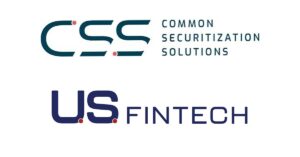Success rates for older automated income- and employment-verification technology hover in the neighborhood of 15% to 25%. These legacy systems literally come with the expectation of failure. This has left much of the mortgage industry turning to time-consuming manual processes for verifying a borrower’s income and employment history.
Major breakthroughs brought on by true digitization flips this model to one with anticipated success for verifying this information. This new technology demonstrates a drastic improvement that will change the face of the industry for the better.
Critical validation
U.S. mortgage requirements are stringent by design. Compared to other loan markets, such as personal or auto, home loans carry a much greater risk simply because they deal with a much larger dollar amount. There also is strict regulatory oversight along with demanding investors, including the government-sponsored enterprises, that are involved with the market.
Although the borrower takes on some of that risk, it’s mortgage lenders and investors who typically take a bigger hit when a borrower defaults on their loan. That’s why lenders have to be cautious, especially after the subprime mortgage crisis leading up to the Great Recession.
Depending on the type of loan, today’s mortgage requirements usually include a downpayment, mortgage insurance, proof of employment, a minimum credit score and a low debt-to-income ratio. Of these requirements, income and employment are frequently the most tedious to verify, and they are often the cause of delays in the loan-approval process.
To put it simply, income and employment are the two key elements that demonstrate the borrower’s ability to manage and repay a loan. Although a credit score gives a sense of the borrower’s propensity to repay a loan, it’s based on historical data and is not intended to represent the borrower’s current financial situation.
Similarly, assets give lenders a sense of the amount of money they could recover should a borrower default on a loan, but this is a worst-case scenario for all parties and is not a factor to place any bets on. So, in the end, income and employment are critical to validating whether a loan applicant will be able to make their mortgage payments on time.
Real-time perspective
Despite the importance of income and employment verification in the mortgage process, legacy automated solutions have notoriously low success rates. Why? Existing automated solutions rely on payroll data voluntarily provided by employers.
Current coverage of the U.S. workforce through this model is exceptionally low. Employers that actually report data usually only represent large enterprises — yet the majority of Americans work for small- to mid-sized businesses. For many of these smaller organizations, submitting payroll data simply isn’t worth it, given the small number of team members looking for mortgages each month. Additionally, the data provided voluntarily by the employers ages pretty quickly.
Since these legacy solutions fail so often, most mortgage originators end up verifying income and employment through time-consuming manual processes. In fact, many originators don’t even bother with existing automated solutions, instead using manual methods from the get-go.
New technology is radically bringing the income- and employment-verification process up to today’s digital standards. By digitally extracting a borrower’s relevant data from their paystub, the latest technology can give originators a real-time perspective into loan applicants’ current employment.
The system can then cross-verify the data with applicants’ income transactions from their financial institutions, ensuring accuracy and confidence. This entirely digital process results in high-value income data — and is expected to have success rates much higher than existing solutions.
Better experience
Real-time financial-data access and insights have the potential to help originators close loans more efficiently. This will lead to more accuracy and less fraud, as well as a better experience for everyone involved in the mortgage process.
New technology allows for one-stop verification. This major advancement in income and employment verification leverages the same consumer-permissioned bank data used for digital asset verification. As a result, some vendors may step up to offer all three as a product suite. The ability to select a single company as a one-stop shop for digital verification will simplify the loan-origination process for lenders and borrowers alike.
Digital verifications can trim days, if not weeks, off the loan-origination process. Not only does this carry the obvious benefit of speeding up underwriting times, it also translates to higher profitability for lenders, as every day that passes results in higher operational costs. These efficiencies are key for lenders that have faced increased expenses in the wake of the Dodd-Frank Wall Street Reform and Consumer Protection Act.
Real-time bank-validated data will always be more accurate than information reported in the past. And with a drastically higher predicted success rate compared to legacy solutions, originators will be able to reduce the amount of manual work they’re doing. In turn, this will lower the risk of inaccurate information or fraud.
Lenders will be able to more easily assess potential borrowers and reduce their documentation burden, all while saving time and money. Consumers will be able to seek out lenders with quicker and more convenient digital-application processes, empowering them to use their financial data and easing the anxiety that often accompanies complicated financial transactions.
• • •
New technology is bringing much-needed efficiencies to the income- and employment-verification process, helping both lenders and borrowers close mortgages more rapidly and easily. It’s about time to expect success.
Author
-
Steve Smith is chairman, CEO and co-founder of Finicity, a leading financial-data access and insights platform enabling data-driven information that leads to smarter financial decisions. Through the Finicity application programming interface, financial institutions and fintech developers can access client-granted financial data to incorporate in financial-management, payment and credit-decision solutions.
View all posts






